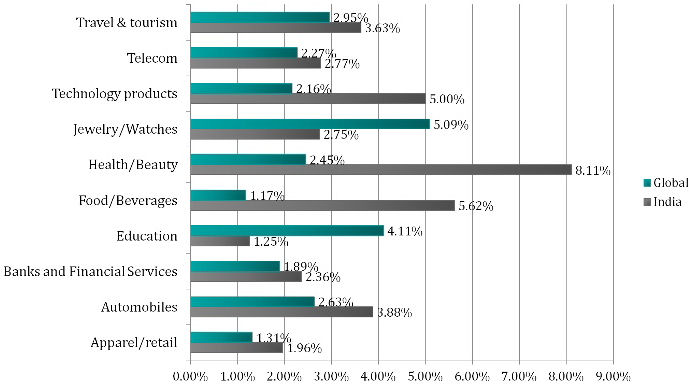The implications of increased brand engagement for PR
PR Insight
Social media has changed the way Indian brands communicate with their audience. The Ketchum Sampark Social Media Engagement Study 2012 indicates that the engagement levels for top Indian brands in eight out of the ten categories surveyed are now higher than global brands.
Senior editor and technology columnist N Madhavan, Hindustan Times says that in order to build a successful social media engagement campaign for the Indian brands, “the focus of a brand should be on reputation, not recall, and customer engagement rather than gimmicks. Some Indian brands seem to be doing fine, especially that focus on conversations and customer service using social media.” He adds “When in trouble, tell the truth. Don't hide, don't fudge. But put a spin, if that is possible.”
The Ketchum Sampark Social Media Engagement Study 2012 shows that Indian brands have learnt their lessons very fast about handling social media in a matter of two to three years, when the international market has taken a decade to learn.
Large PR firms such as Ketchum Sampark know how important online PR will become in the future. “I believe there will be a tectonic shift in the way communication in India will be practiced in the coming four to five years as we become one global community and digital PR will drive this change. We are gearing up for this and be fully equipped to capitalize on this opportunity”, says N S Rajan, Managing Director, Ketchum Sampark.
PR professionals believe that this will also drive a culture where transparency will become the operating environment for PR and professionals will need to learn to use social media, understanding that a combination of good content, transparency with consumers and genuine human interaction will be the drivers for building a reputation online.
The engagement of Indian brands versus worldwide brands by sector

Source: Ketchum Sampark Social Media Engagement Study 2012
Vivek Bahl, founder and director of GoVivekGo, a company that handles social media for large brands such as Cadburys, Domino’s Pizza, Happydent and ITC Limited, says that brands such as Domino's and Rolex in India are successfully managing social media engagement campaigns by interacting with their consumers on a day to day basis. “Previously PR agencies did all the communicating work with the consumers but today brands have to leverage social media to form relationships with clients. Most brands have realised the importance of Facebook and Twitter and have increased their social media budgets. Brands can do even better if the PR people can join hands with the social media management team." The rise of hand held devices means that the consumers of content are on twenty-four seven, reacting, watching and creating topic trends.
The engagement levels are high for brands if consumers’ queries are answered quickly in real time so that they feel connected to the product they use. Commenting on the brands that experienced declining engagement levels, Bahl says that sectors such as banking and telecoms often come across irate customers who have complaints that cannot be solved in real time. Management of engagement levels becomes challenging when customers post negative comments but social media managers must not delete these comments and should try to answer questions as constructively as possible.
Training, as well as better tracking tools, is required for PR agencies as platforms like Twitter present a constant communication challenge in dealing with the always on news cycle for both social media experts and PR professionals.
Experts believe that the industry is still investing a lot in the offline PR model, but with the rise of handheld devices this will change in the next two to five years. PR companies will have to evolve very fast to handle the new environment. This also means further investments in the online PR business that would need to be higher than the offline PR models. The joint requirements of investing in software to track conversations and the need for widespread training means that the online PR model is far more expensive. PR insiders believe a mid size company may have to invest a minimum of Rs. 60 lakhs a year, as compared to an offline PR model where minimum investments can range from Rs. 30 lakhs to a crore and a half for the year.
The lines are blurring fast between PR, marketing and social media management and only those agencies that are nimble enough to realize that will thrive in the future.
If you enjoyed this article, you can subscribe for free to our weekly event and subscriber alerts.
Featured

PR professionals share their views on journalists publicly calling them out on story pitches

Auto blogger renders unconditional apology to Value 360 for defamatory posts

Hottest Indian startups of 2020, Paytm, Dreams 11 lead the charge: Wizikey Report




